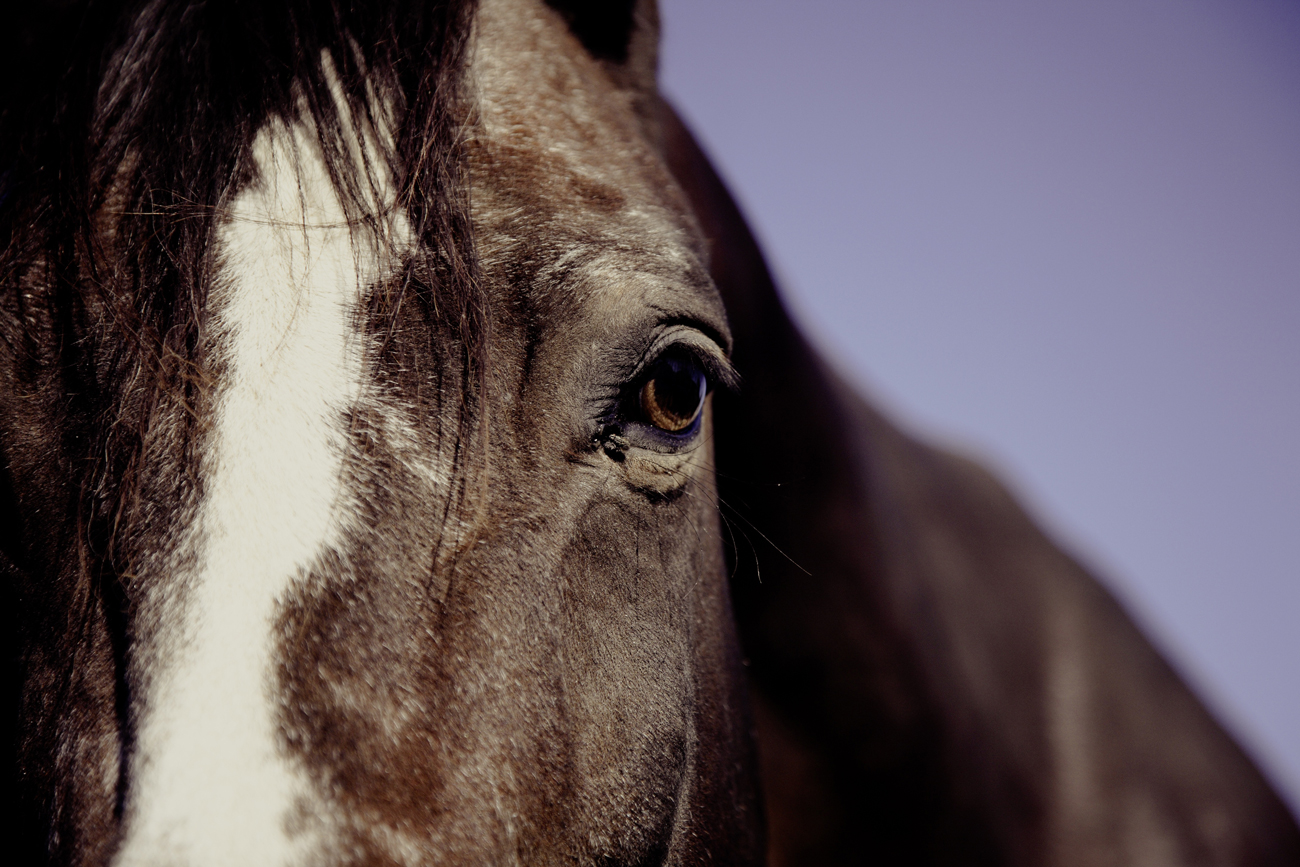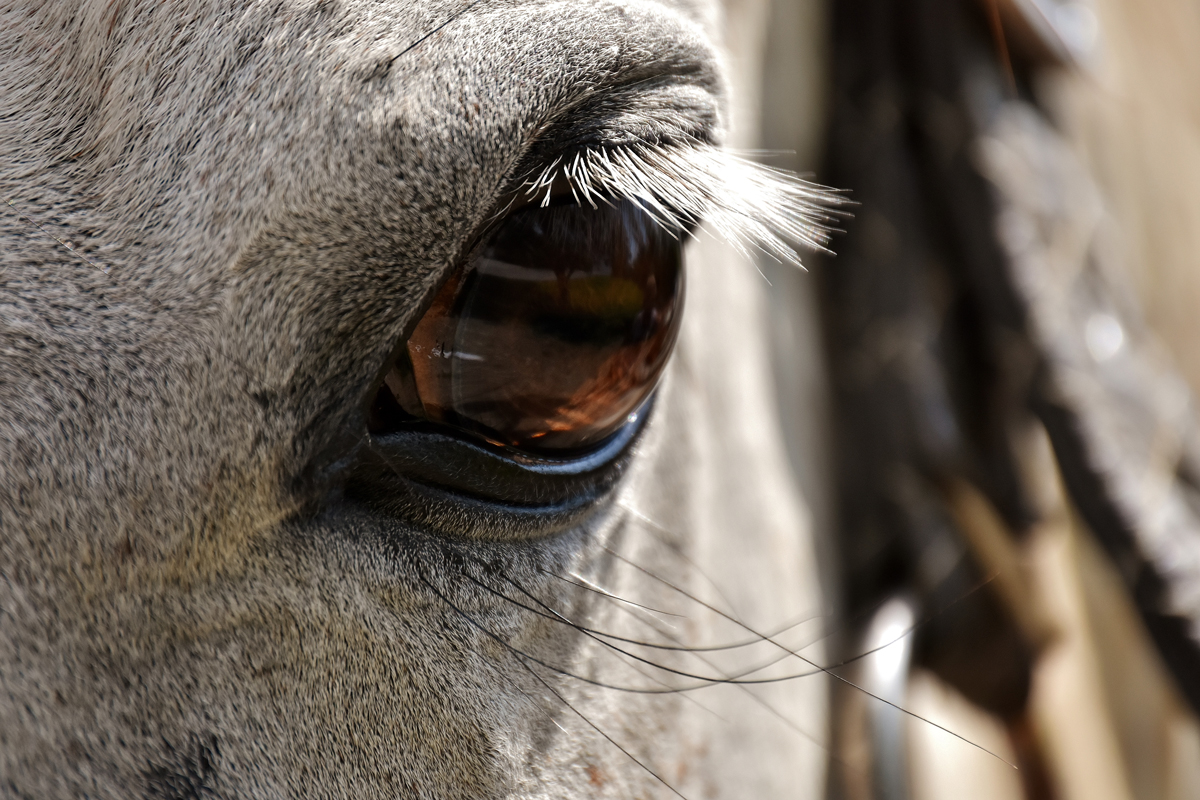Humans and their horses have a very close bond and, as such, owners can sometimes make the mistake of thinking horses feel how we feel and see things how we do. However, despite their many wonderful attributes they really are very different from us.
By understanding how their vision works, for example, we can better understand their world and also figure out how best to train them. For a Thoroughbred racehorse this is vitally important for them to have a long and successful working life.
Racing careers can easily be cut short if you don’t have the best insurance cover in place to protect your equine friend. At Equesure we provide insurance for horses for all breeds and backgrounds of horses, including racehorses. So, give us a call to discuss your insurance needs.
How are horses’ eyes different from ours?
There are several key differences in the structure of horse’s eyes that make their view of the world very different from ours.
The first is in relation to colour perception. While we have trichromatic vision and can see the primary colours of red, green and blue, horses have dichromatic vision and can only see greens and blues.
Indeed researchers at the University of Exeter have recommended the colour of fences and hurdles at National Hunt courses should be changed to take account of horses’ different perception.
They say that while traditional orange markers increase visibility for human riders they don’t do so for horses. In fact using white, fluorescent yellow, or bright blue for fence markers would provide higher contrast for horses. This could prove crucial for improved horse and rider safety.
Horses see far better than us in low-light or night-time conditions. Having such large eyes means their eyes can gather much more light than ours.
They also have a much higher number of the rod photoreceptor cells in the retina responsible for vision in low light. On the other hand, we have a larger proportion of the cone photoreceptor cells meaning we’re better at seeing both colours and during daylight.
In addition, just as with other species such as cats and dogs they have a reflective layer in the eye called the tapetum lucidum.
This layer acts like a mirror and allows the retina to receive far more of the available light than our eyes. It also gives them that mysterious glow when the light catches them in the dark!

Interestingly humans are far better at adapting to a sudden change in light conditions. So if you are moving quickly from light to dark (or vise versa) then take it slow and keep them reassured. Thoroughbreds are known as highly-strung creatures so it doesn’t do to upset them unnecessarily!
As prey animals it isn’t surprising that such sensitive creatures can spook easily. This might also be partly due to the fact they have such a phenomenal field of vision. Our paltry 180-degrees is put to shame by the 350-degree vision they possess.
Having such large eyes on the sides of their heads gives them around 285-degrees of monocular vision (seeing with one eye at a time) with a small 65-degree area of binocular vision to the front.
They do have two small but important blind spots. One directly behind their head and the other immediately in front of their face.
This means that as a horse attempts to jump a fence or other obstacle it actually disappears from view. This can sometimes mean that a horse refuses to jump at the last moment.
Horses are, in general, slightly more nearsighted than humans meaning they see at 20 feet what a human with normal vision can see at 30 feet.
Just as with humans, some horses can be nearsighted or farsighted and therefore more suitable for some disciplines than others.
Common eye problems of horses
The equine eye is a very delicate structure and in comparison to other species, does not tolerate injury or disease at all well.
Seeking veterinary advice as soon as possible if any eye problem develops is therefore very important.
Having up-to-date horse insurance means you can get the professional help your racer deserves as soon as they need it. Such common eye problems you might come across include:
- Corneal ulcers – A relatively common problem, this potentially sight threatening condition has many potential causes and needs early diagnosis as it can get worse very quickly.
- Equine recurrent uveitis (ERU) – ERU is a devastating and painful autoimmune syndrome which causes inflammation inside the eye. Sometimes called moon blindness, this condition can recur throughout a horse’s life and can lead to blindness. In fact uveitis is the leading cause of blindness in horses. For this reason, it is essential every episode of ERU is assessed by your veterinarian at the earliest opportunity.
- Conjunctivitis – Redness, swelling and discharge form the eye are the usual symptoms of this common condition.
- Eye trauma – Owing to the size and position of a horse’s eyes they are prone to damage. Whether an injury from another horse or a branch, dirt or other debris getting lodged in the eye, early treatment is necessary to prevent complications.

Insuring your trusty thoroughbred
Owning a racehorse is a significant investment in both time and money. However, obtaining horse insurance means you can get help with any unexpected costs that arise.
After all, whether your beloved racer is in training, in transit or at a race itself they can easily get themselves into trouble.
So, make sure you’ve got the protection you need by taking out horse insurance with Equesure. Our caring team of insurance specialists is here to make this as simple and as straightforward as possible.
Equesure policyholders could benefit from:
- Vet fees covered up to £2,500 per incident but with an unlimited number of claims within the policy year
- An additional discount for insuring more than one horse
- Saddlery and tack cover available
- Horseboarding cover available
- Personal accident cover up to £20,000
- Public liability cover up to £2 million
- Legal protection up to £50,000 available
- EU cover/usage available upon referral
Get a quick quote for horse insurance today.
Policy benefits, features and discounts offered may very between insurance schemes or cover selected and are subject to underwriting criteria. Information contained within this article is accurate at the time of publishing but may be subject to change.





